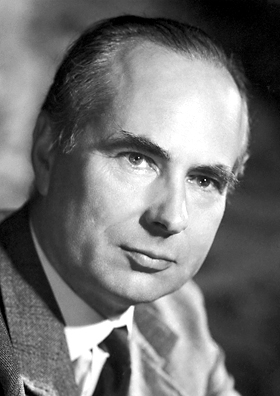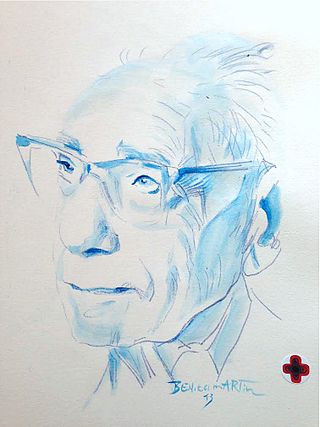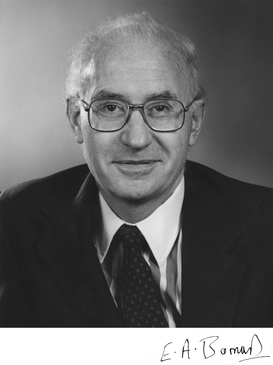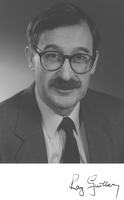Related Research Articles

The Cavendish Laboratory is the Department of Physics at the University of Cambridge, and is part of the School of Physical Sciences. The laboratory was opened in 1874 on the New Museums Site as a laboratory for experimental physics and is named after the British chemist and physicist Henry Cavendish. The laboratory has had a huge influence on research in the disciplines of physics and biology.

Sir Andrew Fielding Huxley was an English physiologist and biophysicist. He was born into the prominent Huxley family. After leaving Westminster School in central London, he went to Trinity College, Cambridge on a scholarship, after which he joined Alan Lloyd Hodgkin to study nerve impulses. Their eventual discovery of the basis for propagation of nerve impulses earned them the Nobel Prize in Physiology or Medicine in 1963. They made their discovery from the giant axon of the Atlantic squid. Soon after the outbreak of the Second World War, Huxley was recruited by the British Anti-Aircraft Command and later transferred to the Admiralty. After the war he resumed research at the University of Cambridge, where he developed interference microscopy that would be suitable for studying muscle fibres.

Sir Bernard Katz, FRS was a German-born British physician and biophysicist, noted for his work on nerve physiology. He shared the Nobel Prize in physiology or medicine in 1970 with Julius Axelrod and Ulf von Euler. He was made a Knight Bachelor in 1969.

Sir Alan Lloyd Hodgkin was an English physiologist and biophysicist who shared the 1963 Nobel Prize in Physiology or Medicine with Andrew Huxley and John Eccles.

Fellowship of the Royal Society is an award granted by the Fellows of the Royal Society of London to individuals who have made a "substantial contribution to the improvement of natural knowledge, including mathematics, engineering science, and medical science".

Edgar Douglas Adrian, 1st Baron Adrian was an English electrophysiologist and recipient of the 1932 Nobel Prize for Physiology, won jointly with Sir Charles Sherrington for work on the function of neurons. He provided experimental evidence for the all-or-none law of nerves.
Richard Darwin Keynes, CBE, FRS was a British physiologist. The great-grandson of Charles Darwin, Keynes edited his great-grandfather's accounts and illustrations of Darwin's famous voyage aboard HMS Beagle into The Beagle Record: Selections From the Original Pictorial Records and Written Accounts of the Voyage of the H.M.S. Beagle, which won praise from the New York Review of Books and The New York Times Book Review.

Richard Hume Adrian, 2nd Baron Adrian FRS was a British peer and physiologist.
William Anthony Harris FRS FMedSci is a Canadian-born neuroscientist, Professor of Anatomy at Cambridge University, and fellow of Clare College, Cambridge. He was head of the Department of Physiology, Development and Neuroscience since its formation in 2006 until his retirement in 2018.
Sir Bryan Harold Cabot Matthews, was Professor of Physiology, Cambridge University 1952–1973, emeritus professor thereafter and Life Fellow of King's College, Cambridge.

Eric Albert Barnard was a British neuroscientist, and Professor at University of Cambridge.

Rainer Walter "Ray" Guillery FRS was a British physiologist and neuroanatomist. He is best known for his discovery that in Siamese cats with certain genotypes of the albino gene, the wiring of the optic chiasm is disrupted, with less of the nerve-crossing than is normal.
References
- 1 2 Department of Physiology, Development and Neuroscience, University of Cambridge
- ↑ Hodgkin, Alan (1979). "Edgar Douglas Adrian, Baron Adrian of Cambridge. 30 November 1889-4 August 1977". Biographical Memoirs of Fellows of the Royal Society . 25: 1–73. doi: 10.1098/rsbm.1979.0002 . PMID 11615790.
- ↑ Feldberg, W. S. (1970). "Henry Hallett Dale. 1875-1968". Biographical Memoirs of Fellows of the Royal Society . 16: 77–174. doi:10.1098/rsbm.1970.0006. PMID 11615480. S2CID 7383038.
- ↑ Huxley, S. A. (2000). "Sir Alan Lloyd Hodgkin, O.M., K.B.E. 5 February 1914 -- 20 December 1998: Elected F.R.S. 1948". Biographical Memoirs of Fellows of the Royal Society . 46: 219–241. doi: 10.1098/rsbm.1999.0081 .
- ↑ Goldman, Y. E.; Franzini-Armstrong, C.; Armstrong, C. M. (2012). "Andrew Fielding Huxley (1917–2012)". Nature. 486 (7404): 474. Bibcode:2012Natur.486..474G. doi: 10.1038/486474a . PMID 22739307.
- ↑ Tsien, R (2010). "Interview with Roger Tsien: A glowing career. Interviewed by Harp Minhas". Integrative Biology. 2 (1): 10–1. doi:10.1039/b926006b. PMID 20473407.
- ↑ Johnson, M. H. (2011). "Robert Edwards: The path to IVF". Reproductive BioMedicine Online. 23 (2): 245–262. doi:10.1016/j.rbmo.2011.04.010. PMC 3171154 . PMID 21680248.
